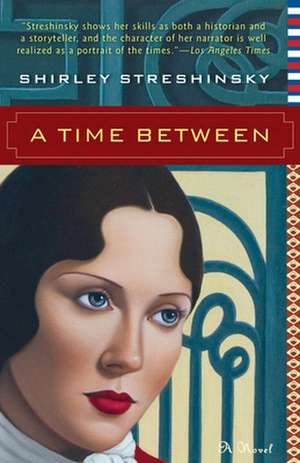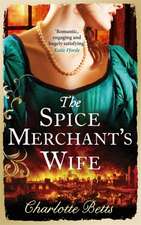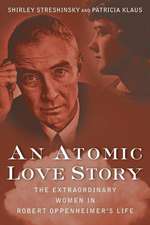A Time Between
Autor Shirley Streshinskyen Limba Engleză Paperback – 5 aug 2013
Ambitious and determined, Hallie Duer craves to be at the center of her epoch—with Prohibition and bootleg gin, Model Ts and moving pictures, Red roundups and the routine lynching of Negroes. The old order is in upheaval, and the emerging new order is at last allowing extraordinary women their long-deserved place in the sun.
In this uncommon love story, Hallie, a consummate observer by profession, learns to become a passionate participant when she falls in love with a dynamic Irish lawyer, who is married but separated from his wife. The course of their involvement is complicated by Catholic convention and a secret from the past. Cool-headed, self-possessed Hallie experiences an all-consuming love, but pain, disappointment, and forgiveness are part of that passion.
In this uncommon love story, Hallie, a consummate observer by profession, learns to become a passionate participant when she falls in love with a dynamic Irish lawyer, who is married but separated from his wife. The course of their involvement is complicated by Catholic convention and a secret from the past. Cool-headed, self-possessed Hallie experiences an all-consuming love, but pain, disappointment, and forgiveness are part of that passion.
| Toate formatele și edițiile | Preț | Express |
|---|---|---|
| Paperback (1) | 119.37 lei 3-5 săpt. | |
| Turner (TN) – 5 aug 2013 | 119.37 lei 3-5 săpt. | |
| Hardback (1) | 220.37 lei 3-5 săpt. | |
| Turner – 5 aug 2013 | 220.37 lei 3-5 săpt. |
Preț: 119.37 lei
Nou
Puncte Express: 179
Preț estimativ în valută:
22.84€ • 23.76$ • 18.86£
22.84€ • 23.76$ • 18.86£
Carte disponibilă
Livrare economică 25 martie-08 aprilie
Preluare comenzi: 021 569.72.76
Specificații
ISBN-13: 9781618580238
ISBN-10: 161858023X
Pagini: 360
Dimensiuni: 140 x 216 x 24 mm
Greutate: 0.54 kg
Editura: Turner (TN)
ISBN-10: 161858023X
Pagini: 360
Dimensiuni: 140 x 216 x 24 mm
Greutate: 0.54 kg
Editura: Turner (TN)
Recenzii
“The author shares her skills as both a historian and a storyteller, and the character of her narrator is as well realized as a portrait of the times.” —Los Angeles Times
“A Time Between registers favorably on several counts. It is the story of a strong woman striving to secure her own identity, a love story, a historical novel that recreates convincingly the California scene during the Jazz Age—and a bit of a mystery, too.” —Savannah News Press
“You will like this book. A gutsy novel of women pushing into a man’s world. Shirley Streshinsky . . . punches out a kaleidoscope of the times.” —Houston Chronicle
“[Streshinsky’s novels] are the best historical fiction being written in America.” —John Jay Osborn, Jr., bestselling author of Paper Chase
“A Time Between registers favorably on several counts. It is the story of a strong woman striving to secure her own identity, a love story, a historical novel that recreates convincingly the California scene during the Jazz Age—and a bit of a mystery, too.” —Savannah News Press
“You will like this book. A gutsy novel of women pushing into a man’s world. Shirley Streshinsky . . . punches out a kaleidoscope of the times.” —Houston Chronicle
“[Streshinsky’s novels] are the best historical fiction being written in America.” —John Jay Osborn, Jr., bestselling author of Paper Chase
Notă biografică
Shirley Streshinsky is a critically acclaimed author of three works of nonfiction and four historical novels. As a journalist and travel essayist, she has written extensively for a wide range of national magazines such as Redbook, Glamour, Preservation, American Heritage, The American Scholar, and Condé Nast Traveler. She is the recipient of the Society of Magazine Writers’ Award for Excellence and the National Council for the Advancement of Education Writing award, and was cited by The Educational Press Association of America for “superlative achievement in features.” Her travel essays have been a feature on National Public Radio. She was married to the late photojournalist Ted Streshinsky and resides in Kensington (Berkeley), California.
Extras
From the Preface
San Francisco
November 11, 1927
Odd memories and random shards of conversation work their way into my thoughts in the early hours of morning. I wake at four or at five, too excited to sleep. It has been this way for weeks.
This morning something Faith said in passing kept at me. Provoked, I suppose, by someone she was photographing, she had complained, “People don’t listen. They become so absorbed in what they have to say that they never hear what you are telling them.”
She is right. People don’t listen. I didn’t listen. I heard the words but not the silences between them. I missed the important inflections, the small hesitations, the peripheral details. I missed the nuances where the truth so often hides.
I should have heard but I didn’t.
Today is Armistice Day. The war ended nine years ago. There will be a parade down Market Street. There will be bunting and flags flying and veterans marching in uniform, the wide hats and the winding puttees. There will be speeches about the Great War and how the Yanks came and how they stayed until it was over, over there.
As if it were over. As if we weren’t a generation crippled, in one way or another, by the war.
Too restless to sleep, I pace about my flat, exhilarated by the prospect of a new day. I want to hurry the sun, to lift it from behind the East Bay hills. I tread lightly, not to disturb those sleeping in the flat below. Yet wanting them to be up, to be alive with me, to get on with the day.
We are to sail on the lie de France. First to the American cemetery at Romagne-sous-Montfaucon. A pilgrimage, an end to old sorrows. Then on to Paris for an interview with Aristide Briand, the minister
of foreign affairs. And to Germany with a letter of introduction to Hermann Muller, who will be the Chancellor if the Socialists win in the May elections. Europe is in economic chaos; France has devalued
the franc; Hindenburg has repudiated Germany’s responsibility for the War; there is so much to understand before I can write with any authority.
I am to be special correspondent for six West Coast newspapers, including my own, the San Francisco Times. To mark the tenth anniversary of the war, I have been assigned to travel through Europe to talk to the people and their leaders, and to write about what is happening and try to predict what lies ahead. “The American people want to be reassured that there will never be another war,” the Boss told me. “We hope you will be able to give those assurances.”
I pick up a fossilized sand dollar from the table near my bed and hold it in the palm of my hand. The photograph I keep next to it was taken the day Agnes found the fossil and gave it to me. It is not a posed picture. My brother and I had walked down the beach together and had paused, locked in conversation, leaning into the wind with the ocean stretched to infinity behind us, his head bent to mine. Faith made that photograph the first time we went to Willow Camp together—Agnes and Sara, Clive and Faith. And Riordan. October, 1921. To celebrate my twenty-seventh birthday and Agnes’s fifty-first. Before. I am like those San Franciscans who define time in terms of before or after the 1906 quake, which must have created some intrinsic division in their lives.
I study the fossil and the photograph, both frozen in time. I look out of my kitchen window and see that the sun is lighting the fingers of fog that have drifted from the Bay into the deep recesses of the city. The floorboards of the Victorian flat creak, as if to signal some diurnal change.
Right now, Lennie, the newsboy who has a stand on the corner of Fifth and Mission, will be waiting for the first edition. Lennie, who isn’t a boy at all, though he was when his legs were blown off at Chateau-Thierry.
Lennie won’t be marching in the parade today.
Nor will Riordan.
On my way to work I will stop at the Laurel Hill Cemetery to take flowers to Babe, who fell in another war.
Strange, how one circle closes just as another, wider circle opens. When I spoke to Faith of the war and of circles closing, she said that perhaps they weren’t circles at all, but only seemed so if viewed from above, or in hindsight. If we look at them from another angle, she suggested, they might prove to be spirals, ever rising, ever widening.
I said I found that to be a frightening prospect—no circle ever closing, no war to end all wars. And she said that maybe all we could ever be certain of was movement, and change.
I think now that she is right about that, too.
There are times when, late in the afternoon before the fog rolls back through the Golden Gate, a luminous yellow light catches, permeates, holds. For the time that it lasts, which is not long, the whole world is bathed in radiant light. I saw it for the first time not long after I arrived in San Francisco in the summer of 1920. It seemed to me to be an illusion, too beautiful to be real. I did not know, then, what it was to be real.
I know now that nothing was as it seemed. Perhaps nothing ever is. What I must do is go back, thread through all that has happened, make translations of a sort—in light of what I know now that I did
not know then. Now and then. Before and after. Circles and spirals.
San Francisco
November 11, 1927
Odd memories and random shards of conversation work their way into my thoughts in the early hours of morning. I wake at four or at five, too excited to sleep. It has been this way for weeks.
This morning something Faith said in passing kept at me. Provoked, I suppose, by someone she was photographing, she had complained, “People don’t listen. They become so absorbed in what they have to say that they never hear what you are telling them.”
She is right. People don’t listen. I didn’t listen. I heard the words but not the silences between them. I missed the important inflections, the small hesitations, the peripheral details. I missed the nuances where the truth so often hides.
I should have heard but I didn’t.
Today is Armistice Day. The war ended nine years ago. There will be a parade down Market Street. There will be bunting and flags flying and veterans marching in uniform, the wide hats and the winding puttees. There will be speeches about the Great War and how the Yanks came and how they stayed until it was over, over there.
As if it were over. As if we weren’t a generation crippled, in one way or another, by the war.
Too restless to sleep, I pace about my flat, exhilarated by the prospect of a new day. I want to hurry the sun, to lift it from behind the East Bay hills. I tread lightly, not to disturb those sleeping in the flat below. Yet wanting them to be up, to be alive with me, to get on with the day.
We are to sail on the lie de France. First to the American cemetery at Romagne-sous-Montfaucon. A pilgrimage, an end to old sorrows. Then on to Paris for an interview with Aristide Briand, the minister
of foreign affairs. And to Germany with a letter of introduction to Hermann Muller, who will be the Chancellor if the Socialists win in the May elections. Europe is in economic chaos; France has devalued
the franc; Hindenburg has repudiated Germany’s responsibility for the War; there is so much to understand before I can write with any authority.
I am to be special correspondent for six West Coast newspapers, including my own, the San Francisco Times. To mark the tenth anniversary of the war, I have been assigned to travel through Europe to talk to the people and their leaders, and to write about what is happening and try to predict what lies ahead. “The American people want to be reassured that there will never be another war,” the Boss told me. “We hope you will be able to give those assurances.”
I pick up a fossilized sand dollar from the table near my bed and hold it in the palm of my hand. The photograph I keep next to it was taken the day Agnes found the fossil and gave it to me. It is not a posed picture. My brother and I had walked down the beach together and had paused, locked in conversation, leaning into the wind with the ocean stretched to infinity behind us, his head bent to mine. Faith made that photograph the first time we went to Willow Camp together—Agnes and Sara, Clive and Faith. And Riordan. October, 1921. To celebrate my twenty-seventh birthday and Agnes’s fifty-first. Before. I am like those San Franciscans who define time in terms of before or after the 1906 quake, which must have created some intrinsic division in their lives.
I study the fossil and the photograph, both frozen in time. I look out of my kitchen window and see that the sun is lighting the fingers of fog that have drifted from the Bay into the deep recesses of the city. The floorboards of the Victorian flat creak, as if to signal some diurnal change.
Right now, Lennie, the newsboy who has a stand on the corner of Fifth and Mission, will be waiting for the first edition. Lennie, who isn’t a boy at all, though he was when his legs were blown off at Chateau-Thierry.
Lennie won’t be marching in the parade today.
Nor will Riordan.
On my way to work I will stop at the Laurel Hill Cemetery to take flowers to Babe, who fell in another war.
Strange, how one circle closes just as another, wider circle opens. When I spoke to Faith of the war and of circles closing, she said that perhaps they weren’t circles at all, but only seemed so if viewed from above, or in hindsight. If we look at them from another angle, she suggested, they might prove to be spirals, ever rising, ever widening.
I said I found that to be a frightening prospect—no circle ever closing, no war to end all wars. And she said that maybe all we could ever be certain of was movement, and change.
I think now that she is right about that, too.
There are times when, late in the afternoon before the fog rolls back through the Golden Gate, a luminous yellow light catches, permeates, holds. For the time that it lasts, which is not long, the whole world is bathed in radiant light. I saw it for the first time not long after I arrived in San Francisco in the summer of 1920. It seemed to me to be an illusion, too beautiful to be real. I did not know, then, what it was to be real.
I know now that nothing was as it seemed. Perhaps nothing ever is. What I must do is go back, thread through all that has happened, make translations of a sort—in light of what I know now that I did
not know then. Now and then. Before and after. Circles and spirals.
Descriere
Ambitious and determined, Hallie Duer craves to be at the center of her epoch—with Prohibition and bootleg gin, Model Ts and moving pictures, Red roundups and the routine lynching of Negroes. The old order is in upheaval, and the emerging new order is at last allowing extraordinary women their long-deserved place in the sun.
In this uncommon love story, Hallie, a consummate observer by profession, learns to become a passionate participant when she falls in love with a dynamic Irish lawyer, who is married but separated from his wife. The course of their involvement is complicated by Catholic convention and a secret from the past. Cool-headed, self-possessed Hallie experiences an all-consuming love, but pain, disappointment, and forgiveness are part of that passion.
In this uncommon love story, Hallie, a consummate observer by profession, learns to become a passionate participant when she falls in love with a dynamic Irish lawyer, who is married but separated from his wife. The course of their involvement is complicated by Catholic convention and a secret from the past. Cool-headed, self-possessed Hallie experiences an all-consuming love, but pain, disappointment, and forgiveness are part of that passion.


